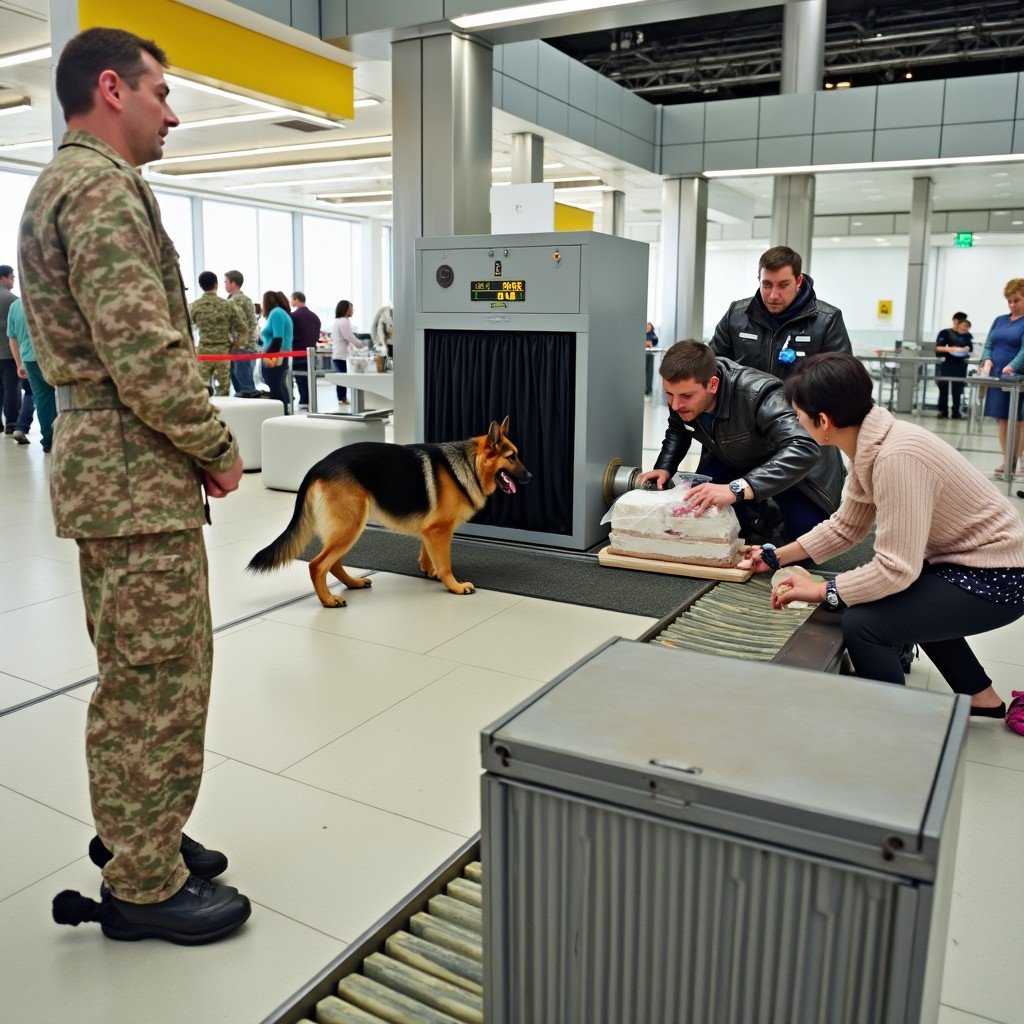Beirut’s Rafik Hariri International Airport is Lebanon’s primary gateway for both passengers and cargo, making it a bustling hub of activity. Every day, the airport sees thousands of travelers and handles massive amounts of cargo, which is shipped worldwide. With such high traffic, maintaining tight security is essential.
To ensure everything runs smoothly, numerous police officers are on duty. But not all law enforcement is visible. Alongside human officers are highly trained search dogs, which play an integral role in detecting suspicious items like drugs, explosives, or large sums of money hidden in baggage or packages.
These dogs are trained to detect specific scents and alert their handlers without causing a scene. When they find something suspicious, they remain still and direct their attention to the item, signaling to their handler to investigate further. This system, simple yet effective, has a proven track record of success.
A Suspicious Discovery
One such dog was working its way through the airport when it became fixated on a package at the cargo terminal. The box, labeled for Kazakhstan, had arrived a few days earlier and was waiting for its next flight. As the dog zeroed in on the box, it became clear that it had detected something unusual.
Though people were going about their business, no one paid much attention to the dog, as it was performing its routine duties. Though the friendly canine might have drawn a few curious glances, petting or distracting the dog was strictly prohibited. Everyone knew the importance of the dog’s role.
Without hesitation, the dog focused its nose on the package, and the officer accompanying it was certain something was amiss. The dog had a reputation for accuracy, and in this case, it was clear that it had identified a suspicious object.
The handler approached the box, signaling the dog to continue its inspection. But then, something unexpected happened. The dog leaped onto the box. While it looked like a regular package, the officer noticed something unusual—a series of small holes around the edges.
The dog became increasingly agitated, whimpering and shifting restlessly. It wasn’t reacting to typical threats like drugs or money—it was far more interested in something inside the box.
The handler began making plans for a thorough inspection. Other airport personnel gathered around, carefully lifting the box and moving it to a secure location. Given the potential risks—especially if explosives were involved—they exercised extreme caution. The situation was tense, as the team understood that one wrong move could lead to disaster.
